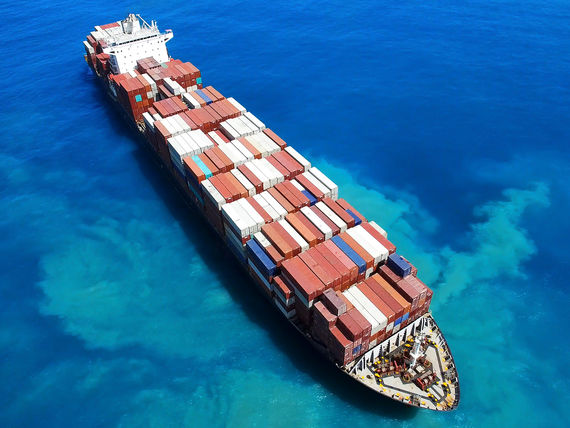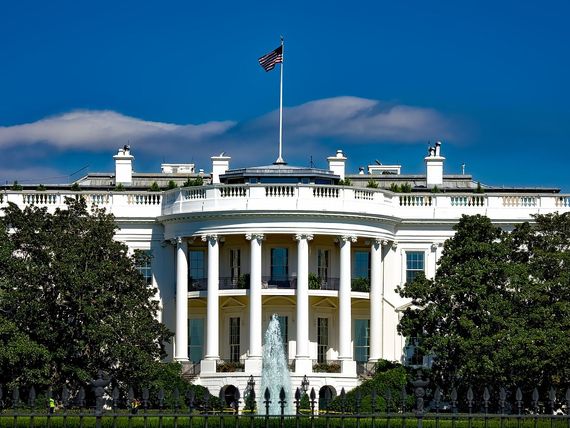Are You Bored Yet?


Ricardo Carrion
Global Account Director
Are You Bored Yet?
Last quarter, I wrote an article titled “The Only Constant is Change!”. So why turn now to operating supply chains in markets that feel...unchanged? It’s not that disruption has quietly exited the stage. Since then, we’ve seen geopolitical conflicts intensify, tariffs shift unpredictably, labor unrest rise, and new trade corridors take shape.
Yet here’s the irony: none of this is truly new. What has shifted is not the nature of disruption, but its persistence and the way these forces increasingly collide and compound one another.
With all of these “familiar” disruptions making their rounds, it begs a provocative question: Are you bored yet?
If the variables are known, why do bottlenecks, delays, and missing containers continue to dominate headlines and balance sheets? The answer, I believe, is simple: too often we treat symptoms, not causes. Short-term tactics may ease today’s pain but rarely prevent tomorrow’s.
Treating the Symptoms vs. Curing the Root Cause
Recently, I visited a doctor for a severe earache. I was prescribed antibiotics. Five days later, the pain remained, only now with additional discomfort. This experience mirrors our current supply chain strategies: Addressing the immediate pain points without solving the underlying root cause.
This realization drives my key argument: We must evolve from tactical firefighting to strategic problem-solving, confronting the root causes of disruption rather than its daily symptoms.
Putting “New” Disruption in Context
The disruptions impacting today’s supply chains(geopolitical tensions, trade barriers, labor shifts)have been with us for decades. The difference today lies in the intensity and interconnectivity of these variables. A tariff adjustment in one market now ripples instantly across networks, colliding with labor shortages in another, and exposing vulnerabilities everywhere.
Let’s consider the scale:
-
The WTO estimates world merchandise trade was about $25.3T in 2022 and $24.01T in 2023 (~5% lower), reflecting both price effects and softer goods demand. The top three exporters—China, the United States, and Germany—collectively shipped ~$7T of goods in 2023, roughly 29% of global exports. Tariff frictions also persist: many U.S. Section 301 tariff lines on Chinese goods remain at 25%. *
-
The U.S., China, and Germany, the top three global exporters, account for over $7 trillion in combined exports, nearly 30% of global merchandise exports.
-
Tariff rates across key economies have fluctuated dramatically in the past five years, with U.S.-China trade seeing tariffs as high as 25% during peak tensions.
Despite advances in visibility and automation, bottlenecks persist because most strategies still focus on firefighting versus prevention.
What Strategic Change Really Looks Like
Here are four foundational ideas to serve as a starting point for developing a global supply chain strategy that meets today’s realities. These are intended to spark deeper conversations about how to build resilient, future-ready networks.
1. Using Technology to Address the Root Cause
Over the past decade, supply chain technologies like tracking platforms, digital twins, and predictive analytics have grown rapidly and become widely adopted. They've helped set a strong foundation for better visibility and coordination.
But visibility is just the starting point.
In conversations with logistics leaders, a common theme emerges: the need for tools that not only show what is happening, but also explain why it is happening and what actions to take. The goal is to move beyond merely observing the supply chain to truly understanding and improving it.
This is where the next phase of innovation comes in. With the help of artificial intelligence, companies can begin to recognize patterns, spot potential issues earlier, and make more informed decisions to stay ahead of disruption. Here are a few industry trends and forecasts:
-
The AI in supply chain market reached $19.8 billion in 2025, growing at a 45.3% CAGR since 2022.**
-
By 2030, it's expected to surpass $70 billion, driven by demand for resilience, automation, and real-time visibility.
-
Gartner predicts that by 2026, more than 80% of large enterprises will adopt AI-enabled supply chain platforms, up significantly from under 5% in 2023.***
-
Key AI applications include: Demand Forecasting to improve accuracy, Inventory Optimization to reduce stockouts, Predictive Maintenance to reduce downtime and extend asset life, Route Optimization to cut costs and emissions, Warehouse Automation to handle more orders per hour, and Supplier Risk Evaluation to flag disruptions in real time.
2. Measuring Volatility Timelines
Let’s consider the recent wave of manufacturing shifts out of China driven in part by rising tariffs, labor costs, and geopolitical uncertainties. Although companies are actively addressing these challenges, they are complex and can take several years to implement.
And here’s the catch: The very conditions that are driving them to make these changes may be resolved in a shorter timeframe, for example, a change in political cycles or trade regulations.
The takeaway? It is more important than ever to understand the “shelf life” of volatility. Some responses, like reshoring or building dual supply bases, may continue long after the original risk has passed. Strategic planning should account not only for the urgency of today’s challenges but also for how long they’re likely to last. Case in point: Since the start of the U.S.-China trade war in 2018, manufacturing diversification has accelerated and many Chinese manufacturers have expanded operations into Southeast Asia, especially Vietnam, Thailand, and Malaysia, to hedge against tariffs, rising labor costs, and geopolitical risk.
3. Going Beyond Manufacturing Sites
Modern supply chain risk analysis must extend beyond Tier 1 suppliers. Disruptions often stem from Tier 2 or Tier 3 vendors, who lack the resilience of larger players. Building a multi-tier visibility platform can help organizations identify choke points before they become failures. Example: The 2021 global semiconductor shortage was rooted not in final assembly plants but in Tier 3 raw material suppliers and Tier 2 fabrication tool vendors e.g., ABF substrate constraints and long equipment lead times, underscoring the need for multi-tier visibility.
4. Understanding Industry Relevance to Government Strategy
Gauge whether your products intersect with national priorities. For example, in the U.S., semiconductors are backed by the $52.7B CHIPS and Science Act, and steel/aluminum face Section 232 measures—policy signals that can reshape sourcing and capacity decisions.
Thriving in (Predictable) Volatility
If there’s one thing companies can’t afford right now, it’s staying stuck in short-term thinking. Long-term supply chain strategy needs to be a top priority. But that doesn’t just mean building plans in isolation. It means bringing in partners, involving other departments, and making sure your strategy reflects what’s happening beyond your own four walls.
There is a lot of great technology out there, but value comes from moving beyond visibility to guidance. Look for tools that actually help you see what’s coming, understand risks early, and make better decisions when it counts.
It’s also a good time to revisit how you define cost. Total Cost of Ownership isn’t just about the price tag anymore. It includes risk, resilience, and your ability to adapt when things change.
Final Thoughts
Managing supply chains in 2025 isn’t about reacting to every headline. It’s about building agility, foresight, and structural resilience into your network. The world isn’t getting more stable, but it is getting more predictable.
So, back to the original question: Are you bored yet?
If so, maybe, just maybe...it’s a sign your strategy is maturing.
*Source: https://www.supplychaindive.com/news/global-trade-2023-WTO-Ukraine-war-inflation/647095/T
**Source: Allaboutai.com – “The AI in Supply Chain Report 2025"
***Source: https://www.technologyrecord.com/article/more-than-80-per-cent-of-enterprises-to-adopt-some-form-of-generative-ai-by-2026-says-gartner
Discover how PSA BDP’s AI-powered tools, like Risk Monitor, Navigator, and others, can elevate your supply chain. Connect with our team today.


